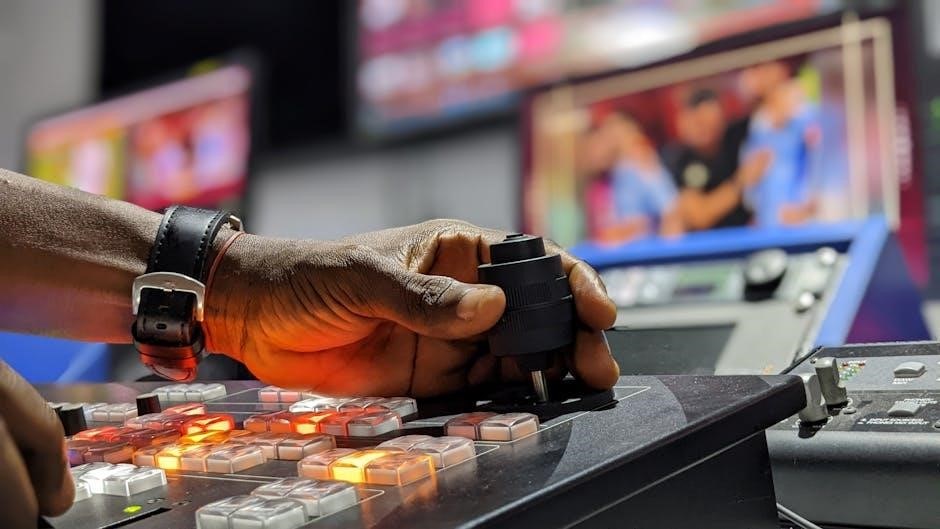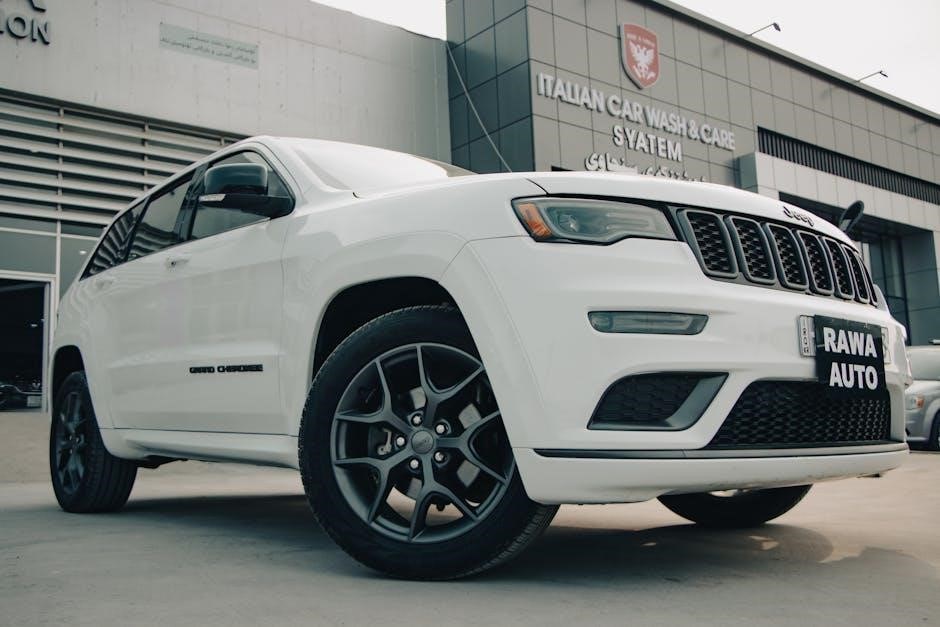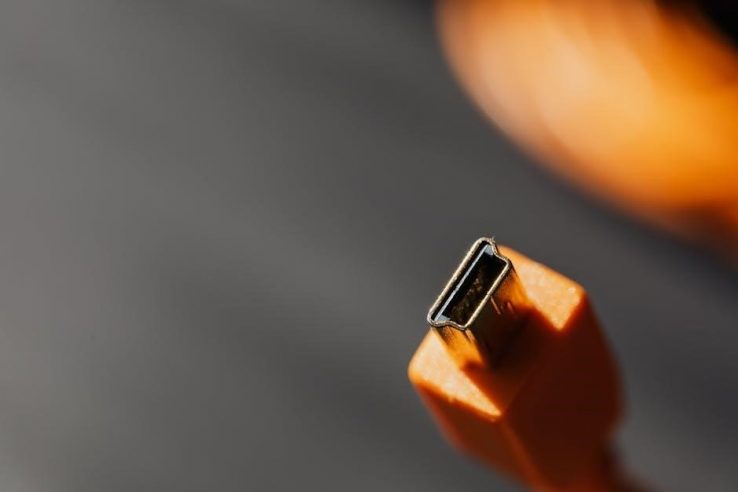Phase 3 of Jamie Eason’s LiveFit program focuses on fat loss while maintaining muscle‚ combining resistance training and cardio for maximum results. It introduces circuit training and split workouts targeting specific muscle groups‚ intensifying the transformation process.
Overview of Phase 3
Phase 3 of Jamie Eason’s LiveFit program is a 4-week phase designed to maximize fat loss while preserving hard-earned muscle. It transitions to a split training routine‚ focusing on specific muscle groups each day. Workouts are structured as circuit training‚ requiring completion of all exercises in a sequence before repeating. This phase emphasizes intensity and efficiency‚ combining resistance exercises with cardio elements to enhance results. The goal is to achieve a leaner physique while maintaining strength and muscle definition‚ making it the final push toward transformation in the 12-week program.
Key Focus Areas
In Phase 3‚ the primary focus is on fat loss while maintaining muscle mass. It emphasizes circuit training to boost metabolism and includes a 6-day split routine targeting specific muscle groups. Cardio and active recovery are incorporated to enhance endurance and overall fitness. The phase also introduces carbohydrate cycling to optimize fat burning while preserving lean muscle. This period is designed to intensify workouts‚ increase intensity‚ and push individuals toward their transformation goals‚ making it the final and most challenging stage of the program.

Workout Structure in Phase 3
Phase 3 features a 6-day split routine with circuit training‚ targeting specific muscle groups daily. It combines resistance exercises and cardio for enhanced fat loss and muscle maintenance.
6-Day Split Training Routine
The 6-day split routine in Phase 3 divides workouts by muscle groups‚ ensuring each area is targeted intensely. Days focus on quads/calves‚ chest/shoulders‚ back/biceps‚ hamstrings/glutes‚ arms/shoulders‚ and cardio/recovery. This structure allows for optimal muscle engagement and recovery‚ accelerating fat loss while preserving muscle. Each session is designed to push limits‚ with circuits repeated 2-3 times and minimal rest between sets. The routine demands dedication but promises significant transformation by the end of the phase.
Muscle Group Targeting
Phase 3 focuses on isolating specific muscle groups to enhance definition and strength. Each workout targets major areas like legs‚ chest‚ back‚ and arms‚ with dedicated days for quads/calves‚ chest/shoulders‚ back/biceps‚ hamstrings/glutes‚ and arms/shoulders. This structured approach ensures balanced development and maximizes fat loss while maintaining muscle mass. Compound exercises and isolation movements are combined to effectively engage each muscle group‚ promoting overall physique improvement and a leaner appearance by the end of the phase.
Circuit Training Format
Phase 3 introduces circuit training‚ combining multiple exercises in a sequence with minimal rest. This format enhances endurance‚ burns fat‚ and maintains muscle. Each circuit targets specific muscle groups‚ repeated 2-3 times with 3-5 minutes of rest between circuits. The structure boosts metabolism and efficiency‚ allowing for a full-body workout. Circuit training in Phase 3 is designed to challenge both cardiovascular and muscular systems‚ promoting a lean‚ toned physique while maintaining strength and definition.

Detailed Workout Routine
Phase 3 includes a structured 6-day split targeting specific muscle groups‚ combining resistance exercises and cardio to maximize fat loss while maintaining muscle. Workouts are intense and focused.
Day 1: Quads and Calves
Day 1 focuses on building and toning the quadriceps and calves through a series of targeted exercises. The workout includes barbell squats‚ walking lunges‚ and calf raises‚ performed in circuits to maximize intensity. Each exercise is completed in 3-4 sets of 12-15 reps‚ with minimal rest between sets to enhance fat burning and muscle endurance. The circuit format ensures efficient training‚ targeting the lower body while maintaining cardiovascular engagement. This structure helps achieve balanced development and strengthens the foundation for overall leg strength and definition.
Day 2: Chest and Shoulders
Day 2 targets the chest and shoulders with a series of exercises designed to build strength and definition. The workout includes dumbbell bench presses‚ incline dumbbell presses‚ and lateral raises‚ performed in circuits to maximize intensity. Each exercise is completed in 3-4 sets of 12-15 reps‚ with minimal rest between sets to maintain cardiovascular engagement. The circuit format ensures efficient training‚ targeting the upper body while promoting fat loss and muscle toning. This focus on compound movements helps improve overall upper body strength and enhances aesthetic definition.
Day 3: Back and Biceps
Day 3 emphasizes building a strong‚ defined back and toned biceps through a circuit-style workout. Exercises include pull-ups‚ bent-over rows‚ and dumbbell curls‚ performed in 3-4 sets of 12-15 reps. The circuit format‚ with minimal rest‚ boosts cardiovascular intensity while targeting muscle growth. Focus on controlled movements to maximize engagement and avoid injury. This workout enhances posterior strength and aesthetic appeal‚ complementing the overall fat-loss and muscle-maintenance goals of Phase 3. Proper form and consistency are key to achieving optimal results in this session.
Day 4: Hamstrings and Glutes
Day 4 focuses on strengthening and toning the hamstrings and glutes through targeted exercises. The workout includes deadlifts‚ Romanian deadlifts‚ and glute bridges‚ performed in 3-4 sets of 12-15 reps. Circuit training ensures continuous movement‚ enhancing fat loss while building muscle. Emphasize proper form to engage the correct muscles and prevent injury. This session is crucial for achieving a balanced physique and improving lower-body strength‚ aligning with Phase 3’s goals of maintaining muscle and burning fat effectively.
Day 5: Arms and Shoulders
Day 5 targets the arms and shoulders‚ focusing on exercises like dumbbell curls‚ preacher curls‚ and shoulder presses. The workout includes 3-4 sets of 12-15 reps per exercise‚ performed in a circuit format to maximize efficiency. Emphasizing proper form ensures muscle engagement and prevents injury. This session helps achieve definition and symmetry in the upper body while contributing to overall fat loss and muscle maintenance‚ aligning with Phase 3’s goals of a toned‚ lean physique.
Day 6: Cardio and Active Recovery
Day 6 focuses on cardio and active recovery to enhance cardiovascular health and aid muscle recovery. Activities include low-intensity exercises like walking‚ swimming‚ or yoga to promote blood flow without excessive strain. This day helps maintain calorie burn and supports overall fitness while allowing muscles to recover from the intense workouts of the week. It’s designed to rejuvenate the body and prepare for the next week’s training‚ ensuring a balanced approach to fitness and muscle maintenance.

Nutrition and Diet Plan
The 12-week female diet plan emphasizes structured meals‚ calorie control‚ and macronutrient balance to support fat loss and muscle maintenance‚ with a focus on meal timing and portion measurement.
12-Week Female Diet Plan
The 12-week female diet plan in Phase 3 focuses on structured meal timing‚ portion control‚ and macronutrient balance to optimize fat loss while preserving muscle. It emphasizes eating within an hour of waking‚ planning meals in advance‚ and measuring food portions. The plan recommends designating a day for food preparation to ensure consistency. Calorie cycling is introduced‚ with a focus on reducing carbohydrates and increasing protein intake to maintain muscle. Additionally‚ hydration and mindful eating are stressed to support overall transformation and metabolic health throughout the program.
General Diet Tips
The LiveFit Phase 3 diet emphasizes meal planning‚ hydration‚ and avoiding processed foods. Eating within an hour of waking and designating a food prep day are key. Measure portions‚ prioritize protein‚ and balance macronutrients to support fat loss and muscle retention. Incorporate healthy fats and complex carbs‚ while reducing sugar intake. Stay hydrated to boost metabolism and recovery. Avoid mindless snacking and focus on whole‚ nutrient-dense foods to fuel your workouts and progress. Consistency is crucial for achieving desired results in this phase.

Supplements and Nutrition Tips
Recommended supplements include whey protein‚ BCAAs‚ and omega-3s to enhance muscle recovery and fat loss. Focus on timing meals around workouts for optimal performance and recovery.
Recommended Supplements
Jamie Eason recommends whey protein for muscle recovery‚ BCAAs to prevent muscle breakdown‚ and omega-3s for joint health. A multivitamin ensures essential nutrients are met‚ supporting overall wellness. These supplements‚ when combined with a balanced diet‚ enhance fat loss and muscle maintenance during Phase 3. Proper hydration and timing around workouts are also emphasized to maximize results and support recovery.

Downloading Phase 3 PDF
The Jamie Eason Live Fit Phase 3 PDF is available for free download‚ offering detailed workout and diet plans. It’s printable and easy to share.
Accessing Workout and Diet Plans
The Jamie Eason Live Fit Phase 3 PDF is readily available for download online. It includes detailed workout routines‚ exercise sets‚ and reps‚ along with a structured 12-week diet plan. The document provides specific guidance for targeting muscle groups‚ supersets‚ and cardio integration. Users can access the PDF for free‚ print it‚ or save it to cloud storage. It’s an essential resource for tracking progress and staying organized during the final phase of the program.

Tracking Progress
Tracking progress in Phase 3 involves logging workouts‚ noting improvements‚ and using tools like MyFitnessPal to monitor your fitness and nutrition journey effectively every day.
Workout Log and Progress Tracking
Tracking your progress in Phase 3 is essential for staying motivated and ensuring results. Use a workout log to document each exercise‚ including sets‚ reps‚ and weights used. Monitor increases in strength and endurance weekly. Additionally‚ track your nutrition and cardio performance to maintain consistency. Digital tools like MyFitnessPal and Skimble can help log workouts and meals effectively. Regularly review your progress to make necessary adjustments and celebrate milestones. This structured approach ensures accountability and maximizes your transformation during Phase 3 of Jamie Eason’s LiveFit program.

Success Stories and Results
Many have completed Phase 3 of Jamie Eason’s LiveFit program‚ sharing inspiring transformations and testimonials. Participants report visible fat loss‚ increased muscle definition‚ and improved overall fitness‚ showcasing the program’s effectiveness in achieving desired results through dedication and consistency.
Testimonials and Transformations
Many participants in Jamie Eason’s LiveFit Phase 3 have shared inspiring testimonials‚ highlighting significant fat loss‚ improved muscle definition‚ and increased confidence. One user reported losing over 10 pounds of body fat while maintaining muscle mass‚ achieving a leaner physique. Another testified to feeling stronger and more motivated‚ crediting the program’s structured workouts and diet plan. The combination of circuit training and targeted muscle groups has helped many individuals reach their fitness goals‚ showcasing the program’s effectiveness in transforming both body and mindset. These success stories emphasize the program’s ability to deliver results when followed diligently.

Final Tips for Success
Consistency and dedication are key to achieving your fitness goals in Phase 3. Ensure you follow the structured workout and nutrition plan diligently‚ and track your progress regularly. Meal prep and staying hydrated are crucial for maintaining energy and focus. Listen to your body and rest when needed‚ but also push yourself to challenge your limits. Stay committed‚ and remember‚ the results come from hard work and perseverance. Embrace the journey and celebrate small victories along the way to stay motivated and achieve your best transformation.


























































